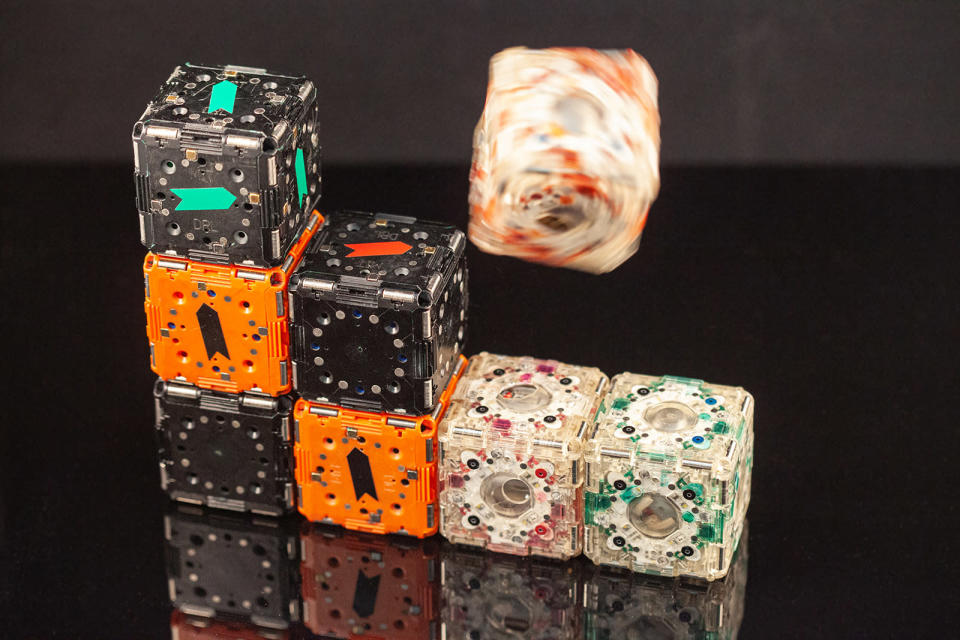Block-like robots could assemble into emergency staircases
They can spin, flip and identify each other using barcodes.
Next to Boston Dynamics' leaping humanoids, the dice-like M-Block robots from MIT might not look very cool. Considering their lack of limbs, though, the latest versions can perform some impressive tricks like jumping, climbing and assembling into larger structures, Big Hero 6 style. Those skills could one day help them assemble themselves into a staircase to rescue survivors trapped in a building, or be used as real-world Minecraft blocks.
Each M-Block contains a flywheel inside that spins at 20,000 rpm, along with permanent magnets on each edge and face. That lets them leap, crawl and spin along using angular momentum, then clip onto other M-Block's magnetically. As such, despite their seeming simplicity, they can band together to form structures and do tasks.
"Other robotic systems have much more complicated movement mechanisms that require many steps, but our system is more scalable and cost-effective," said lead author John Romanishin. "The unique thing about our approach is that it's inexpensive, robust, and potentially easier to scale to a million modules."
As before, each module can move in up to 24 different directions and without any protruding limbs, it's easy for them to avoid collisions and clear obstacles. What's new is that the they can now communicate with each other via barcodes, which is more reliable than infrared light or radio waves, especially with lots of blocks all in the same spot.
In one experiment, the researchers wanted to see if the robots could transform into a straight line from a random structure. To do that, they first had to determine how they were connected, then decide how to move in order to get into the line. At the end, nearly all of them (90 percent) were able to do so.
For now, the 16 blocks can only do simple things like follow lights, form a line or follow arrows. The next step is to ramp up the number of blocks, making for bigger swarms that can assemble into more complex structures with improved capabilities. We've seen that movie before, but the team believes the robots will be better suited to saving, not terminating lives.


